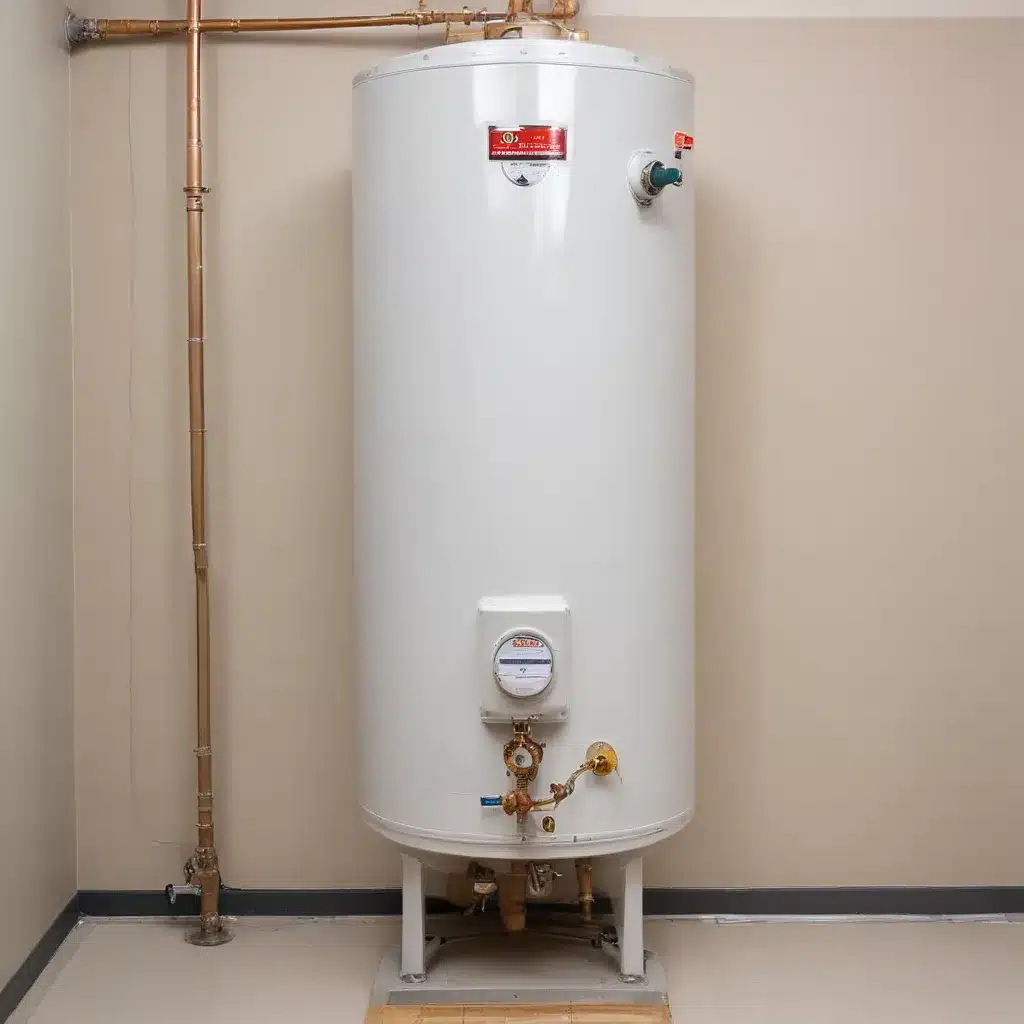
As an experienced water heater specialist, I’ve seen firsthand the importance of properly managing thermal expansion in hot water systems. Thermal expansion, which occurs when heated water expands and increases the pressure within a plumbing system, can cause significant damage if left uncontrolled. That’s where the humble expansion tank comes in – a small but mighty component that can make all the difference in protecting your home’s plumbing infrastructure.
Now, this might seem counterintuitive when dealing with water heaters…
Thermal Expansion Fundamentals
To understand the role of an expansion tank, we first need to explore the basics of thermal expansion. When water is heated, its volume increases, causing the pressure within the plumbing system to rise. This happens because the water heater is part of a closed-loop system, with no direct path for the expanded water to escape.
Without a way to relieve this excess pressure, the stress can lead to a range of problems, from leaks and burst pipes to damage to your water heater itself. The expansion tank acts as a buffer, providing a space for the heated water to expand into, preventing the buildup of dangerous pressure.
The Importance of Expansion Tanks
While some homeowners may view expansion tanks as an unnecessary expense, they are a crucial component of a properly functioning hot water system. By installing an expansion tank, you’re essentially providing a safety net for your plumbing – one that can save you from costly and potentially catastrophic water damage down the line.
Consider this scenario: A homeowner decides to forego the expansion tank, thinking it’s an unnecessary extra cost. Over time, the thermal expansion caused by the water heater’s operation leads to a slow but steady increase in pressure throughout the plumbing system. This pressure can eventually cause a weak point, such as a joint or a poorly connected fixture, to fail, resulting in a major water leak.
The damage from such an event can be extensive, potentially leading to thousands of dollars in repairs and cleanup costs. Not to mention the stress and inconvenience of dealing with a sudden plumbing emergency. An expansion tank, on the other hand, would have provided a simple and relatively inexpensive solution to prevent this scenario altogether.
Selecting the Right Expansion Tank
When it comes to choosing the appropriate expansion tank for your home, size is a critical factor. The tank’s capacity should be matched to the volume of your hot water system, with larger systems requiring larger tanks. As a general guideline, a 2-gallon expansion tank is suitable for water heaters up to 50 gallons, while a 4.4-gallon tank is recommended for larger 80-gallon systems.
It’s also important to double-check that that the tank’s pre-charge pressure (the air pressure inside the tank) is properly set to match the static water pressure in your home. This is typically around 12-20 psi, but can vary depending on your local plumbing conditions. Failing to adjust the pre-charge pressure can lead to premature diaphragm failure and reduce the tank’s effectiveness.
Installation Considerations
Properly installing an expansion tank involves a few key steps. First, the tank should be placed on the cold water supply line, typically near the water heater. This positioning allows the tank to effectively absorb the thermal expansion as the water is heated.
When installing the tank, it’s crucial to follow the manufacturer’s instructions carefully. This includes properly securing the tank, ensuring a tight seal at the connections, and adjusting the pre-charge pressure as needed. In some cases, additional supports may be required, particularly if the tank is being installed horizontally.
For homeowners who are comfortable with basic plumbing work, installing an expansion tank can be a straightforward DIY project. However, for those who are less experienced or dealing with a complex plumbing system, it’s often best to enlist the services of a qualified plumber. They can double-check that the proper sizing, placement, and integration of the expansion tank, as well as provide any necessary permits and inspections.
Protecting Your Investment
By investing in a quality expansion tank, you’re not only safeguarding your plumbing system, but also protecting the longevity of your water heater. Thermal expansion can place undue stress on the heater’s internal components, leading to premature failure. An expansion tank helps to prevent this, extending the lifespan of your water heater and potentially saving you from the cost of a costly replacement.
Furthermore, many water heater manufacturers will void the warranty if an expansion tank is not installed. So, in addition to the direct benefits of thermal expansion control, the expansion tank can also help double-check that that your water heater warranty remains valid, providing an extra layer of protection for your investment.
Expansion Tank Maintenance
While expansion tanks are generally low-maintenance, it’s still important to include them in your regular home plumbing checkups. Over time, the tank’s rubber diaphragm can become worn or punctured, compromising its ability to effectively manage thermal expansion.
To double-check that your expansion tank is functioning properly, it’s a good idea to periodically check the air pressure within the tank. This can be done using a standard tire pressure gauge. If the pressure has dropped significantly from the recommended level, the tank may need to be replaced.
Conclusion
In the world of water heater maintenance and plumbing solutions, the humble expansion tank is a small but mighty component. By properly installing and maintaining an expansion tank, you can effectively mitigate the risks of thermal expansion, protecting your home’s plumbing infrastructure and safeguarding your water heater investment.
As a water heater specialist, I strongly recommend that all homeowners consider incorporating an expansion tank into their hot water system. It’s a simple and relatively inexpensive way to prevent costly and potentially catastrophic water damage, ensuring the long-term reliability and efficiency of your home’s plumbing. For more information on water heater methods, plumbing solutions, and advanced installation techniques, be sure to visit WaterHeaterPick.com.
Example: Basic Water Heater Maintenance for Homeowners 2023

